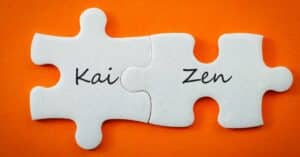Sometimes it can be hard to move forwards, both in personal life and in the workplace. While it may be circumstances holding you back, personal weaknesses can also stop us from reaching our full potential. And recognising weaknesses in oneself is an essential aspect of personal growth and self-improvement.
Few of us like to admit we have weaknesses, but we all have them. And identifying them requires self-awareness, introspection, plus a willingness to confront areas where we may not like the truth. But by acknowledging and addressing weaknesses, it’s possible to take proactive steps to tackle them – ultimately developing skills and abilities you may not know you had.
Here we’ll explore how you can recognise weaknesses in yourself, and put in place effective ways to overcome them.
⏰Key points:
- Weaknesses in the workplace can include poor communication; lack of feedback and recognition; lack of accountability; resistance to change and poor time management… Although there are numerous others. This is often due to lack of training and/or awareness. Although working on emotional intelligence can be beneficial for many weaknesses.
- To identify weaknesses, you might take time for self-reflection, and seek feedback. When they’re identified, conduct a SWOT analysis, and start working on each weakness one by one. Setting SMART goals can also be helpful here.
- By acquiring new skills and knowledge – and taking the occasional risk – it’s possible to develop and overcome weaknesses. But it’s important to remember that this is a journey with challenges along the way, and there’s no such thing as a quick fix.
What are weaknesses in the workplace?
Weaknesses in the workplace are qualities which can hold both you and your team back. These may not be personal flaws as such, but can sometimes be down to lack of training, or the workplace dynamic sometimes being different from how things operate in personal life outside of work.
Examples of weaknesses can include:
- Poor communication. This is a big one. Lack of communication can lead to misunderstanding, resulting in potential errors and delays. This affects the team’s ability to work efficiently, and sometimes negatively impacts workplace relationships. It can also lead to conflict.
- Not enough feedback and recognition. People thrive on constructive feedback and recognition for their efforts. If this is missing, it can lead to demotivation and disengagement. And ultimately, a lack of job satisfaction will have a knock-on effect on the team.
- Lack of accountability. This works both ways. If employees aren’t held accountable for certain actions (or inaction), mistakes aren’t learned from, which means there’s no improvement. Likewise, leaders should accept accountability if they’re at fault. Lack of accountability can undermine productivity and motivation.
- Ineffective leadership. Good leadership can have a really positive effect on staff engagement, morale and productivity. Weak leadership has quite the opposite. If leaders lack vision or fail to provide clear direction, the team becomes rudderless. Equally, failure to support team members will lead to plummeting morale.
- Ineffective teamwork. Team effectiveness hinges on collaboration and mutual support. If individuals don’t help, share information or support each other, the whole team suffers.
- Inadequate skills or training. Staff should be armed with the skills and knowledge to do the job properly. If this is lacking, it will obviously have a negative effect on their performance – and that of the whole team. That’s why continual professional development and training programs are imperative.
- Resistance to change. Paradoxically, people are both incredibly adaptable, yet resistant to change. In the workplace, people may struggle with new technology, or with process or organisational change.
- Inefficient time management. If time isn’t managed properly, it can lead to missed deadlines and decreased productivity. This also has an overall effect on stress levels. If anyone in the team cannot prioritise, they procrastinate or otherwise wastes time, this certainly counts as a weakness.
Are weaknesses in the workplace linked to emotional intelligence?
They certainly can be. Emotional intelligence (EI) has strong connections with communication, empathy and relationship building. These are all positive qualities to bring to the workplace. They’re also characteristics which can be worked on.
If you’d like to become more effective in the workplace, look at our emotional intelligence training course.
Please note that having certain weaknesses in the workplace doesn’t necessarily mean you have low emotional intelligence. But even the most empathic and communicative members of the team can still always strive to improve.
How can you overcome weaknesses in the workplace?
There are numerous steps which can be taken to help tackle weaknesses in the workplace. Here are some strategies which you may find useful.
#1. Take time for self-reflection
Self-reflection involves setting aside time to analyse your thoughts, actions and behaviors. Think about situations where you feel less confident or encounter challenges. Are there any patterns or recurring themes? For example, did you communicate a feeling or idea as well as you could have done? Were you using plain language, or might things you’ve said be open to interpretation?
By honestly assessing your strengths and weaknesses, you can gain valuable insights into areas that require improvement.
#2. Seek feedback from others
Receiving feedback from trusted colleagues, friends or family members can provide an external perspective on your weaknesses. You might even consider taking on a mentor.
When you ask for constructive criticism, be open to observations, and try not to take things too personally. Feedback is an opportunity for growth, and listening to different viewpoints can help you gain a clearer understanding of where you may be falling short.
#3. Conduct a SWOT analysis
A SWOT analysis (strengths, weaknesses, opportunities, threats) is a framework used in business that can also be applied to personal development. Make a list of your strengths and weaknesses, focusing on areas where you feel inadequate or struggle. Analyse how these weaknesses might hinder your progress. Then consider potential opportunities to overcome them.
#4. Work on self-improvement
Once you’ve identified your weaknesses, prioritise them based on their impact and significance. Start by addressing those that have the greatest influence on your personal or professional life. By focusing on one weakness at a time, you can allocate your time effectively, while avoiding becoming overwhelmed.
#5. Set SMART goals
Next, establish SMART goals to address your weaknesses. These are objectives which are specific, measurable, achievable, relevant and timebound.
Clearly define what you want to achieve, then outline the steps required to get there. By breaking your goals into smaller, manageable tasks, you make it easier to track your progress and stay focused. This also stops you from becoming overloaded with seemingly unwieldy tasks.
#6. Seek knowledge and acquire new skills
One of the best ways to go about tackling specific weaknesses is through gaining knowledge and relevant skills. Consider taking courses, attending workshops or engaging in learning platforms online. You might even go old-school and hit the books!
And, as mentioned above, it’s a good idea to seek out a mentor. This will help you acquire skills and knowledge from someone who’s gone the distance in your chosen field.
#7. Take risks!
Real growth often occurs outside of one’s comfort zone. As such, you should be willing to take risks and embrace discomfort.
Challenge yourself by engaging in activities that directly confront your weaknesses. This could involve public speaking, taking on new responsibilities at work, or facing situations that make you uncomfortable. You’re unlikely to expand your capabilities and build resilience if you never step outside your comfort bubble.
#8. Celebrate progress. And be kind to yourself!
When you make progress in addressing your weaknesses, be sure to give yourself the recognition you deserve. Whether it’s a small step or a milestone, celebrating your progress reinforces positive behaviour and motivates you to keep going.
And being kind to yourself is also key to the process of tackling weaknesses. It’s good to understand that everyone has room for improvement, and it’s a natural part of personal growth. Treat yourself with kindness and understanding, especially when facing setbacks or encountering challenges. Always bear in mind that the path to self-improvement is ongoing, and setbacks are opportunities to learn.
Tackling your weaknesses – it’s up to you
Recognising weaknesses is not a sign of inadequacy. Rather, it demonstrates a willingness to grow and improve. It helps to embrace the process as an opportunity to expand your skills and overcome obstacles, ultimately reaching your full potential.
The path to tackling weaknesses, like so many things, is a journey – not a quick fix. But by approaching it positively, with dedication and self-reflection, you can tackle your weaknesses… Hopefully starting you on a transformative journey of personal development.
Find out more about improving self-confidence for yourself and for your team.







